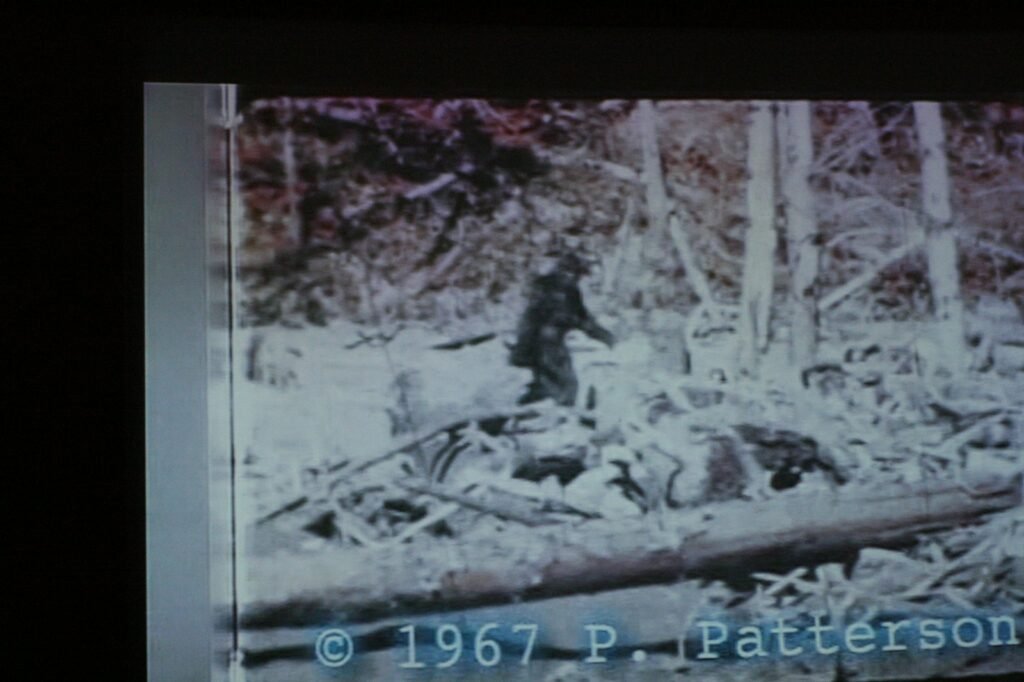The Sasquatch

The Sasquatch got its name from the Salish Sasquits, while the Algonquin of the north-central region of the continent refer to a Witiko or Wendigo. Other nations tell of a large creature much like a man but imbued with special powers and characteristics. The Ojibway of the Northern Plains believed the Rugaru appeared in times of danger and other nations agreed that the hairy apparition was a messenger of warning, telling man to change his ways. The more common name for the Sasquatch is Bigfoot. The legends of Bigfoot go back beyond recorded history and cover the world. In North America, particularly in the Northwest, you can hear tales of seven-foot-tall hairy men stalking the woods, occasionally scaring campers, lumberjacks, and hikers.
Bigfoot got its nickname in 1958 when a man named Gerald Crew found a set of prints at a construction site in California that were obviously too big to be human, though they had very humanistic qualities. Plaster molds of the footprints were made as evidence of their find. Journalist Andrew Genzoli of the Humboldt Times published the story of “Bigfoot”, giving it credibility and even international recognition. Many years later, the find was said to be a hoax. When the brother of the man who ran the site died, the family came forward to say that their son had left the prints as a hoax. Despite the new information that showed the story to be a hoax, the case continued to draw Bigfoot hunters to the area and would be the case that solidified the name of the mysterious beast in history.
Bigfoot is most often described as a large, muscular, and bipedal ape-like creature covered in black, dark brown, or dark reddish hair. Anecdotal descriptions estimate a height of roughly 1.8–2.7 meters (6–9 ft), with some descriptions having the creatures standing as tall as 3.0–4.6 meters (10–15 ft). Some alleged observations describe Bigfoot as more “man-like”, with reports of a human-like face. In 1971, multiple people in The Dalles, Oregon, filed a police report describing an “overgrown ape”, and one of the men claimed to have sighted the creature in the scope of his rifle, but could not bring himself to shoot it because, “It looked more human than animal”.
Common descriptions also include broad shoulders, no visible neck, and long arms, which skeptics describe as likely misidentification of a bear standing upright. Some alleged nighttime sightings have stated the creature’s eyes “glowed” yellow or red. However, eyeshine is not present in humans or any other known apes and so proposed explanations for observable eyeshine off of the ground in the forest include owls, raccoons, or opossums perched in foliage. Michael Rugg, owner of the Bigfoot Discovery Museum in Northern California, claims to have smelled Bigfoot, stating, “Imagine a skunk that had rolled around in dead animals and had hung around the garbage pits”.
The enormous footprints for which the creature is named are claimed to be as large as 610 millimeters (24 in) long and 200 millimeters (8 in) wide. Some footprint casts have also contained claw marks, making it likely that they came from known animals such as bears, which have five toes and claws.
The most famous footage of the Sasquatch came from the Patterson-Gimlin Film in 1967. The video shows a creature that is supposedly Bigfoot walking in the woods. One of the biggest reasons people believe the film is actual evidence of Bigfoot is the way the creature walked. One of the videographers claimed that the film was analyzed by a special effects department in a professional film studio and the staff concluded that the video would have been nearly impossible to fake.
Alleged vocalizations such as howls, screams, moans, grunts, whistles, and even a form of supposed language have been reported and allegedly recorded. Some of these alleged vocalization recordings have been analyzed by individuals such as retired U.S. Navy cryptologic linguist Scott Nelson. He analyzed audio recordings from the early 1970s said to be recorded in the Sierra Nevada mountains dubbed the “Sierra Sounds” and stated, “It is definitely a language, it is definitely not human in origin, and it could not have been faked”. Les Stroud has spoken of a strange vocalization he heard in the wilderness while filming Survivorman that he stated sounded primate in origin. The majority of mainstream scientists maintain that the source of the sounds often attributed to Bigfoot are either hoaxes, anthropomorphizing, or likely misidentified and produced by known animals such as owl, wolf, coyote, and fox.
There have been many other claims of Sasquatch sightings over the years. Many claim that the creature is territorial and have thrown rocks, knocked down trees, and struck objects against trees. In other reports, lodgepole pine and other small trees have been observed bent, uprooted, or stacked in patterns such as weaved and crisscrossed, leading some to theorize that they are potential territorial markings. Although many events have been the result of hoaxes or misidentifications of other animals, many believe that the stories of the Sasquatch are real.
Information gathered from Mil.wa.gov/the-legend-of-bigfoot, mythology.net, Wikipedia
